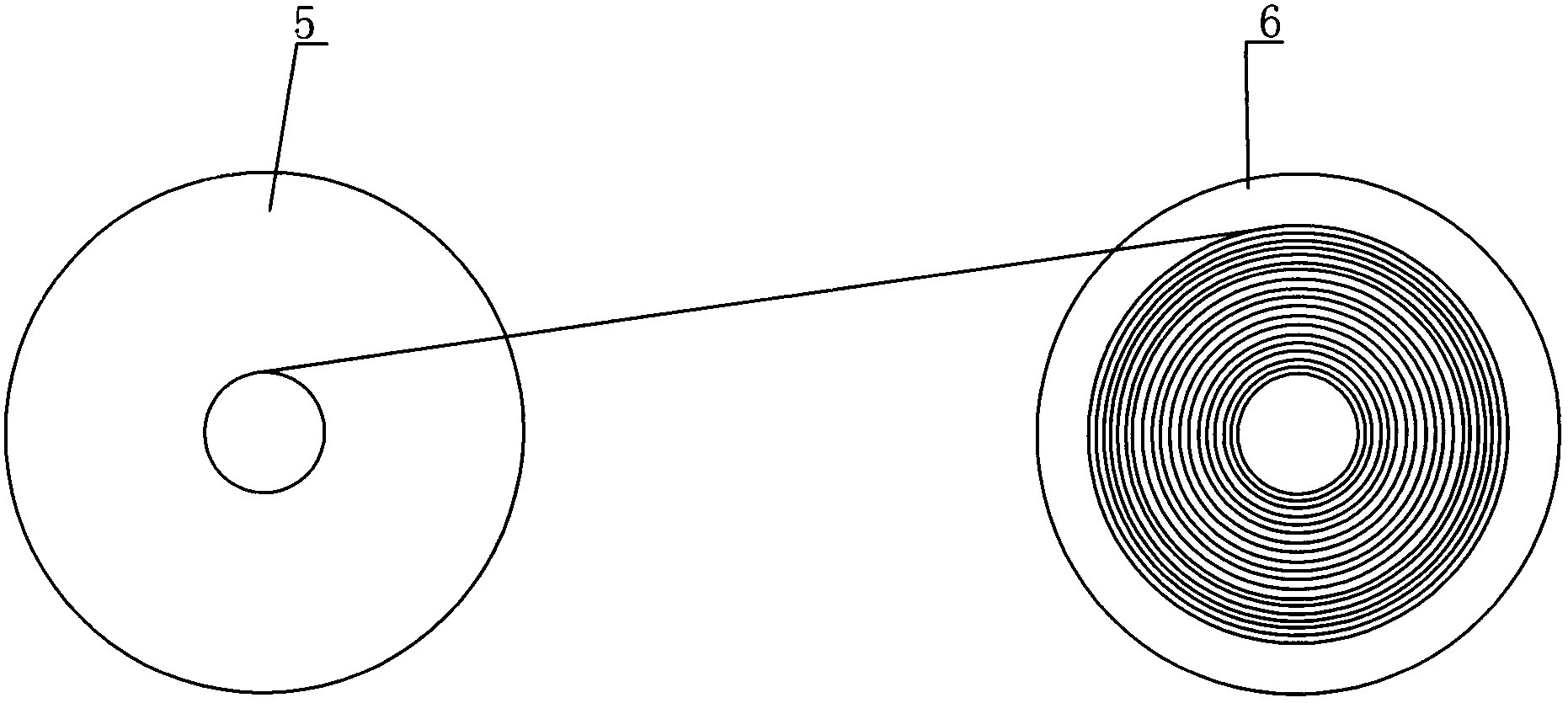Coaxial bidirectional winding accelerated shipboard aircraft catapult
A carrier-based aircraft and catapult technology, applied in the direction of launching/dragging transmission devices, etc., can solve problems such as unreliable stability, high power consumption, and complex structure, and achieve fast overload response adaptation, less space occupation, and simple structure Effect
- Summary
- Abstract
- Description
- Claims
- Application Information
AI Technical Summary
Problems solved by technology
Method used
Image
Examples
Embodiment
[0046] The design steps are as follows:
[0047] The carrier-based aircraft must obtain 30m / s on a 100-meter runway 2 Acceleration can take off, the aircraft takeoff speed and acceleration movement time calculation formula is as follows:
[0048] V=√(2aL)=√(200×30)≈77.46m / s (1)
[0049] t=√(2L / a)=√(200 / 30)≈2.58s (2)
[0050] The length of the traction belt = the length of the runway, L = the sum of the lengths of the traction belts wound on the winch, the length of the traction belt
[0051] L = (L1 + L2 + ... LN) = 100 meters = the length of the ejection runway (3)
[0052] The formula for calculating the length of each layer of the traction belt of the winch: Li=3.14(D+2dn) (4)
[0053] D is the diameter of the winch shaft,
[0054] d = thickness of traction belt;
[0055] n = number of layers of traction belt
[0056] L=100=3.14[(D+2d1)+(D+2d2)+(D+2d3)+...(D+2dn)] (5)
[0057] The length of the known ejection track=the length of the traction belt=100 meters, ignore ...
PUM
 Login to View More
Login to View More Abstract
Description
Claims
Application Information
 Login to View More
Login to View More - R&D
- Intellectual Property
- Life Sciences
- Materials
- Tech Scout
- Unparalleled Data Quality
- Higher Quality Content
- 60% Fewer Hallucinations
Browse by: Latest US Patents, China's latest patents, Technical Efficacy Thesaurus, Application Domain, Technology Topic, Popular Technical Reports.
© 2025 PatSnap. All rights reserved.Legal|Privacy policy|Modern Slavery Act Transparency Statement|Sitemap|About US| Contact US: help@patsnap.com



